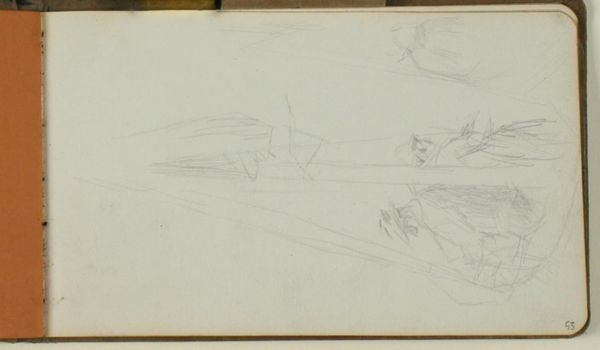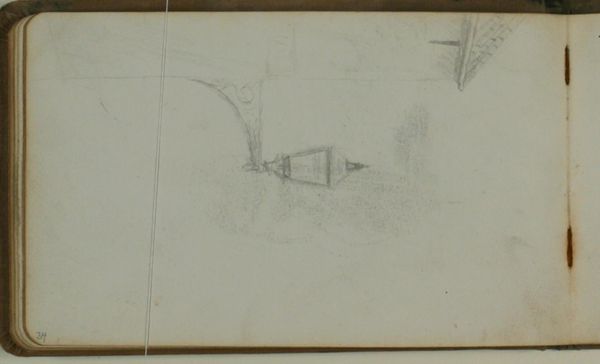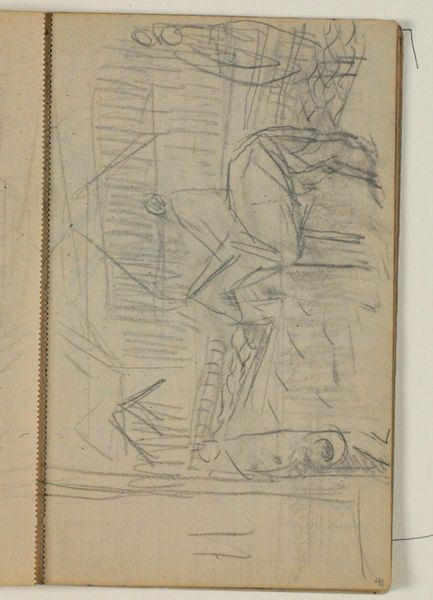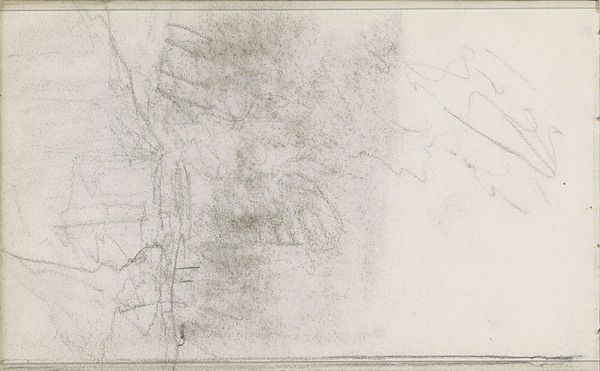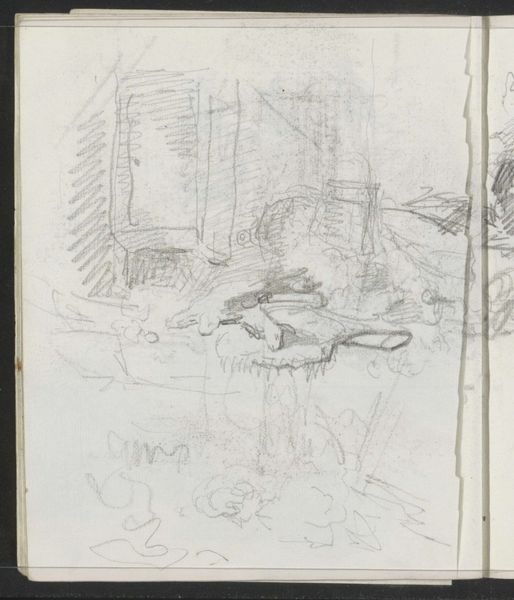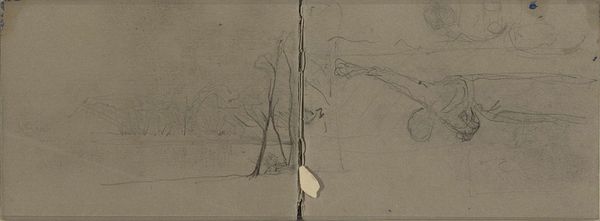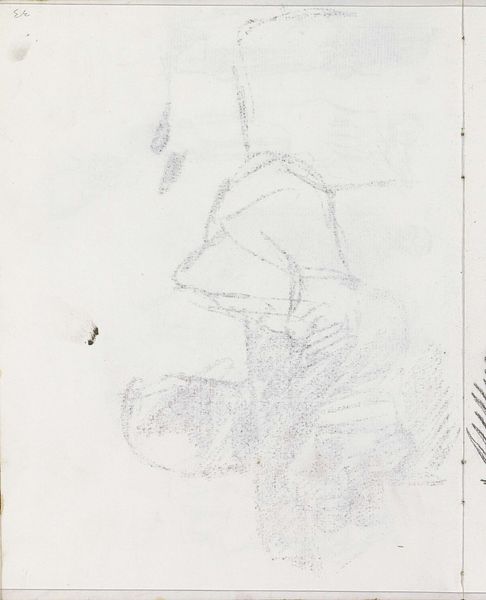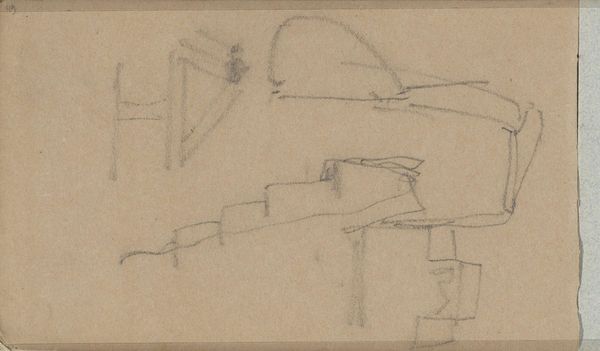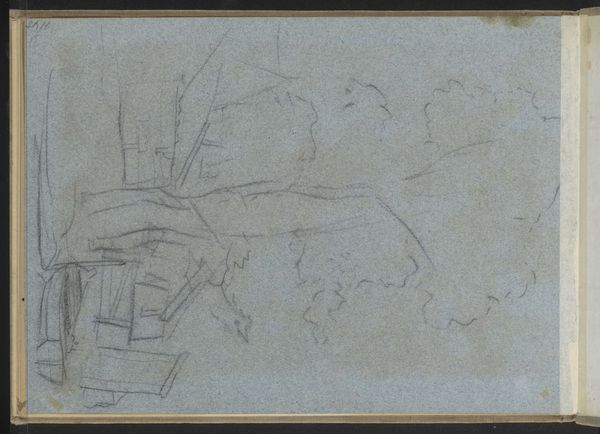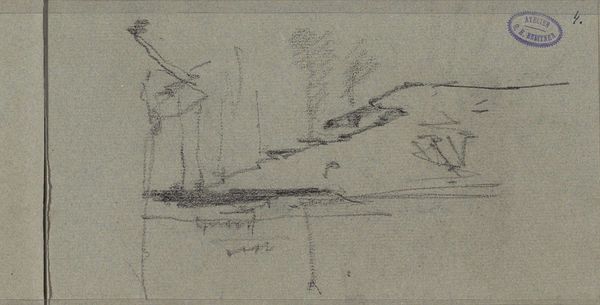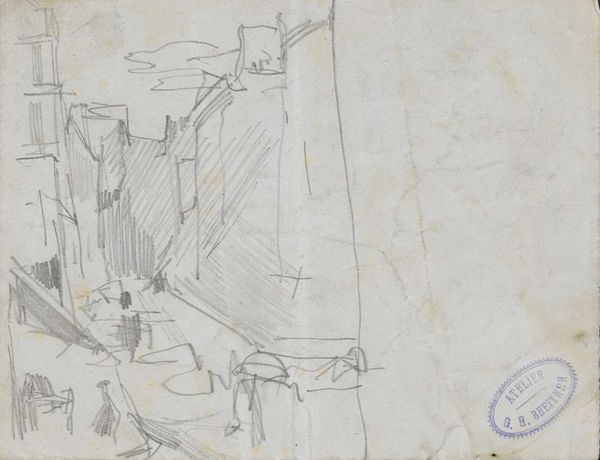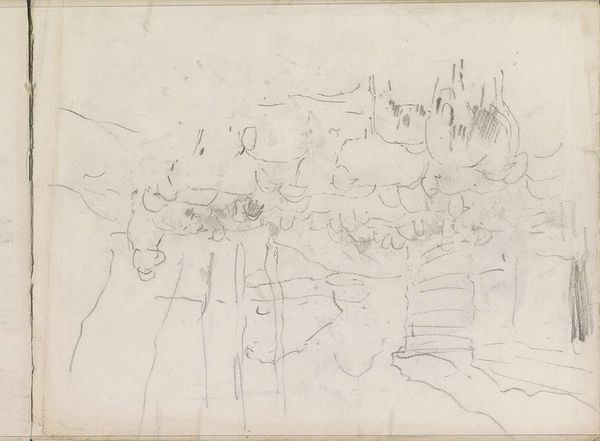
drawing, paper, pencil
drawing
landscape
paper
coloured pencil
pencil
realism
Dimensions: 113 mm (height) x 182 mm (width) (bladmaal)
Curator: We're looking at "Træstudie" or "Tree Study", created in 1881 by Niels Larsen Stevns. It's a pencil and coloured pencil drawing on paper, residing here at the Statens Museum for Kunst. Editor: My first impression is one of quiet observation, even loneliness. The bare minimum has been set down, as if sketching quickly on a walk. The tonality is so limited, we're missing most of the spectrum, heightening that feeling of melancholy. Curator: Interesting. For me, the appeal resides in its realism and dedication to form. Consider how Stevns uses line to denote volume, creating depth with very few strokes. Look particularly at the texture he achieves on the tree trunk itself. We see layering of values that suggest deep shade. Editor: Of course, this falls within a broader artistic and social context. In late 19th century Denmark, there was a burgeoning Realist movement concerned with accurately depicting nature and everyday life. Landscape paintings grew from expressing national pride as a celebration of the land's natural bounty to capturing intimate views like this one in our display, revealing the more private relationships found through encounters with it. Curator: Precisely! The tree fills almost half the picture plane. You could suggest a structuralist interpretation where it serves as a symbol of nature itself – its strong verticality creating an anchoring axis amidst the loose hatching around it. And its surface represents more that is contained within nature. Editor: Or is it equally important to note that it's not *finished*? Sketches such as these are key in understanding how the rapid developments of that era meant art became about the immediacy of capturing a glimpse of an atmosphere or a location. Here, there is also what looks like a distant house, sketched and then ignored; the location may have changed quickly due to environmental development that rendered parts like those obsolete during later execution stages, so time played a major role when such pieces were done out in plein air! Curator: It does seem to prioritize recording an initial sensory experience over detailed rendering of setting as primary intent. Though that prioritization ultimately contributes so heavily to our final experience, it remains to explore its deeper purpose on the whole. Editor: True, that feeling of being incomplete seems like the modern aesthetic. I still can’t shake that loneliness, as I view the subject like some forgotten witness slowly erased as societal shifts took place all around.
Comments
No comments
Be the first to comment and join the conversation on the ultimate creative platform.
